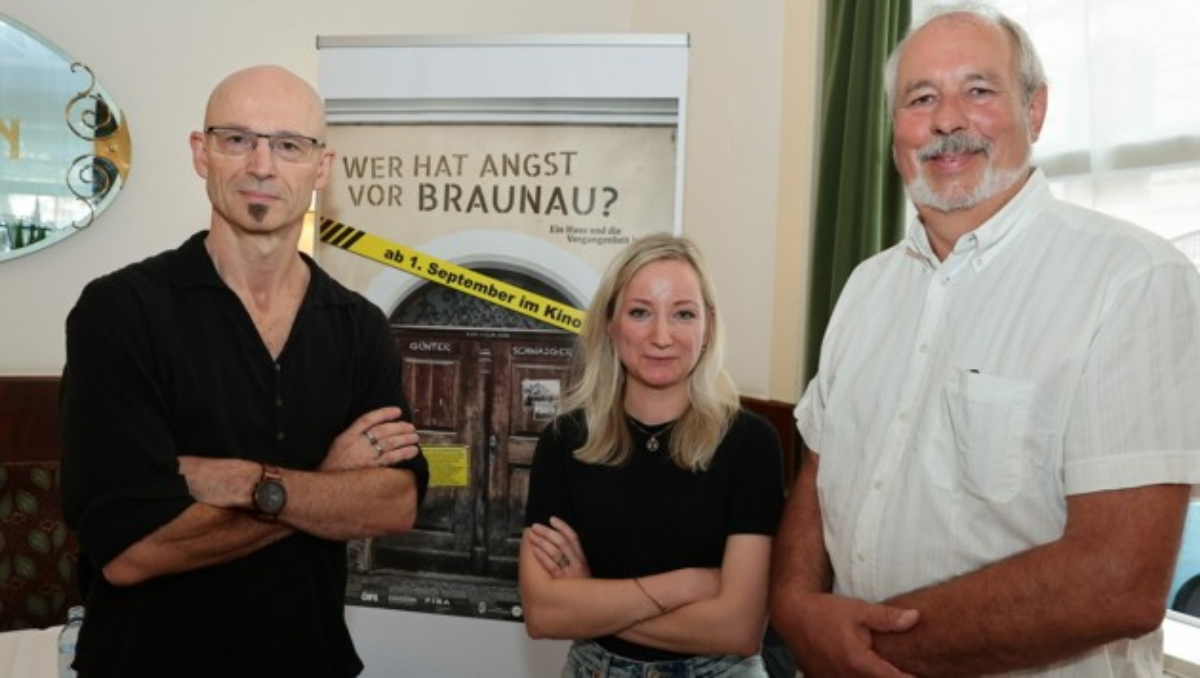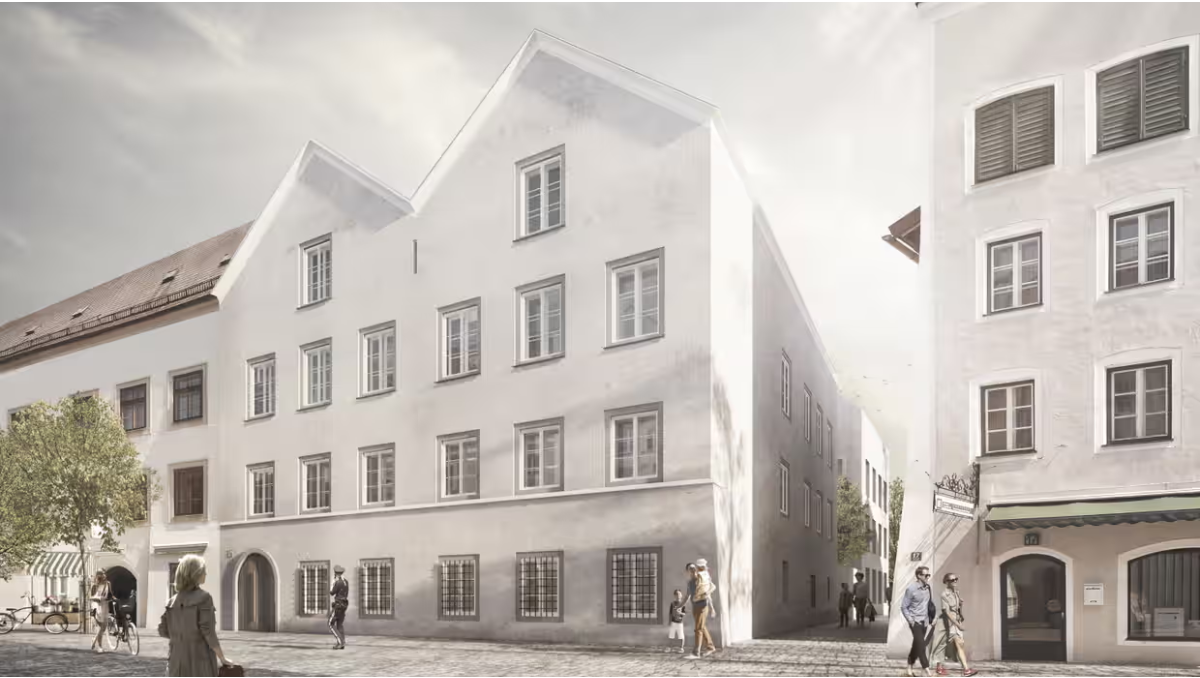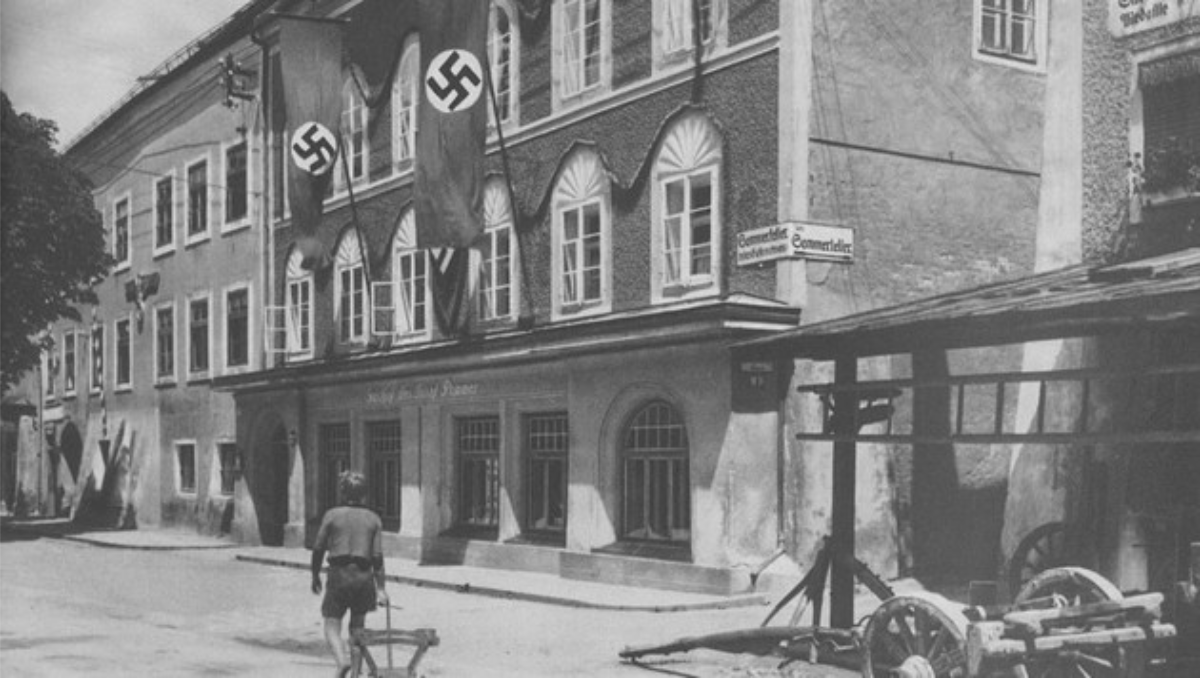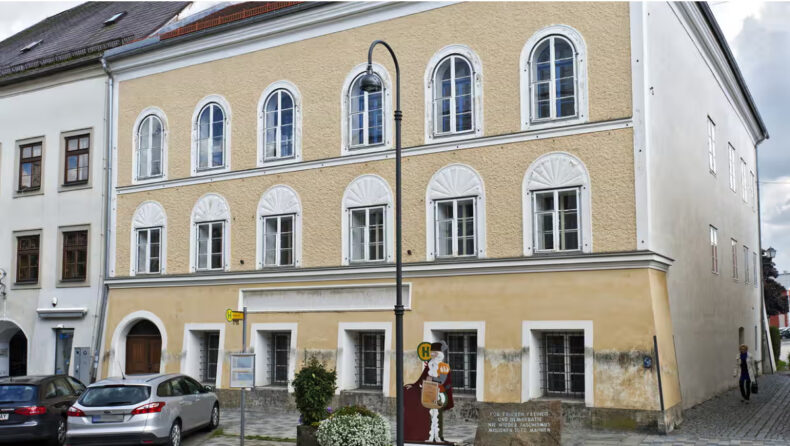Plans of the Austrian government to turn Adolf Hitler’s birth house into a police station might fulfil the dictator’s wishes, according to a recent archival find which only exacerbates the negative public opinion surrounding the move.
Table of Contents
Plans of Austrian ministry
According to a Guardian article in May, the Austrian interior ministry laid out plans for the yellow corner house in the northern town of Braunau to be used for providing human rights training to police officers. It was acquired in 2016 following a lengthy and bitter legal battle as a measure to prevent the house being used as a Neo-Nazi shrine. Development of the 800 square metre structure would cost around 20 million euros and is scheduled to begin on the 2nd of October this year, ending in 2025, with the training centre becoming operational in 2026.
Hitler’s will implemented?
However, in what is described as an “irony of history” by historian Florian Kotanko, those plans encounter a hurdle. Günter Schwaiger, director of a documentary titled “Wer hat Angst vor Braunau?” (Who’s afraid of Braunau?), referred to a newspaper article published on 10 May 1939 in a press conference in Vienna, stating that it was the late dictator’s wish for the offices of the district authorities to be located in his birth house. Schwaiger, who plans to release the documentary featuring the newspaper article later this month, asserted that the ministry would “always be suspected” of fulfilling the late dictator’s wishes, asking the government to rethink it’s plans.

Oliver Rathkold, historian and member of the expert commission tasked with dealing with the house, questioned the article’s authenticity and deemed it to be insufficient proof of the autocrat’s “wishes”. Speaking to Austrian newspaper Kronen Zeitung, he rubbished the comparison made by Kotanko, as “the police today act on a democratic and constitutional basis”. The Ministry of Interior announced that “everything will go ahead as planned”, and defended it’s decisions by pointing at the example of a former apartment of Hitler in Munich being used by various regional police departments since 1949.

Public resist authority, want “tolerance and peace”
Austrian citizens have largely stood distant with the Ministry’s stance, as a recent survey found that 53% of the population wanted the house to be used as a centre for discussions on National Socialism, anti-fascism, tolerance and peace. 20% were in favour of it’s demolition, while only 6% saw use by authorities as appropriate.
According to the expert committee, demolition was ruled out as an option, fearing the potential of the move being seen as Austria denying it’s fascist past and acquiring negative international attention. Karl Nehammer, current Chancellor of Austria, opined that the police “are guardians of basic liberties and freedoms,” thus the house becoming a police station “is the downright most suitable use,” in June 2020.
Robert Eiter, board member of the Mauthausen Committee which deals with educational work concerning the Mauthausen-Gusen concentration camp, perceived the attempt to “neutralise such a property” as “absurd”.
A “Nazi Pilgrimage”
Despite the Nazi leader living only a few months at the house in Braunau, a northern town situated at the Austrian-German border, there has always been a deep-seated fear over the house attracting attention from the far-right, especially if “Hitlerhaus” was granted the status of a public place. During the reign of the ‘Third Reich’, the house was seen as a pilgrimage site, and since the end of World War II, the Austrian government has made several efforts to prevent the house falling into the wrong hands.

The Legal Arrangement
Thus an arrangement was sought with the family of Gerlinde Pommer, who owned the house for nearly a century. Pommer would rent the house to the government, receiving 4800 euros every month since the 1970s. The interior ministry used the house as a centre for people with disabilities, named “Lebenshilfe”, till the arrangement fell apart in 2011, when Pommer refused to undertake crucial renovation work, while also declining to sell it.
What followed was a drawn out court affair which saw its last chapter in 2019, when Austria’s highest court ruled that Pommer was entitled to some 800k euros as compensation for the house. Since then, the government has mulled over several prospects and new, positive purposes for the house, even organising an EU-wide design competition in November 2019.
Born on the top floor of the house on 20 April 1889, the dictator has, unsurprisingly, given the town a distinct reputation. Harry Buchmayr, a Social Democrat living in Braunau, observed how it is “not so seldom” when Nazi sympathisers stop in front of the house, taking photographs while doing the infamous salute. A sole memorial stone stands in front of the house, with the words “For peace, freedom and democracy – never again fascism – remembering the deaths of millions” etched onto it, going against the recommendation of the expert commission. In a similar vein, every year on the 20th of April, anti-fascist demonstrators rally outside the building, as Austria seeks to interact with it’s dark past.













